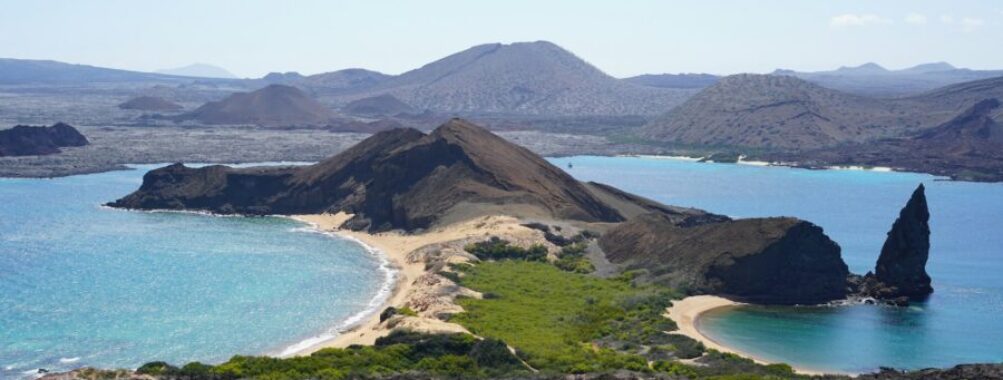
Cheapest Way to Visit Galapagos Islands: 7 Insider Tips for Budget Travelers in 2025
So you want to see blue-footed boobies, giant tortoises, and those wild volcanic beaches up close, but your wallet’s feeling light? Yeah, you’re definitely not the only one. Honestly, the cheapest way to visit the Galapagos Islands is to skip those pricey cruises and go for a self-guided, island-hopping adventure. Stay on the main inhabited islands, use local ferries, and book day tours when you need to. I’ve done it—eating empanadas by the dock in San Cristobal, hopping on a last-minute snorkel trip in Isabela, and finding hostels for less than what I’d spend on a night out back home.
Doing Galapagos on a budget isn’t magic, but it does take some planning. Dodge peak seasons, stay flexible, and keep an eye on last-minute deals. Once you’re there, local food, buses, and even some wildlife hotspots can be surprisingly affordable—if you’re patient and a bit adventurous.
Table of Contents
- Key Takeaways
- Planning Your Galapagos Budget Trip
- How to Create a Galapagos Itinerary
- Key Budget Travel Considerations
- Choosing Your Islands
- Flights and Entry Costs
- Finding the Cheapest Flights to Galapagos
- Baltra vs San Cristobal Airports
- Understanding National Park Fees
- Affordable Accommodation Options
- Where to Stay on a Budget
- Best Towns for Saving Money
- Island Hopping vs. Galapagos Cruise
- Pros and Cons of Cruises
- Budget-Friendly Island Hopping
- Saving on Food and Local Transportation
- Eating at Local Restaurants and Markets
- Getting Around the Islands on a Budget
- Top Budget Activities and Day Tours
- Snorkeling and Diving for Less
- Affordable Full-Day and Half-Day Tours
- Free and Low-Cost Wildlife Experiences
- Best Islands for Budget Travelers
- Santa Cruz Highlights
- Exploring Isabela on a Shoestring
- San Cristobal on a Budget
- Floreana for the Adventurous
- Must-See Sights and Local Experiences
- Charles Darwin Research Station
- Tortuga Bay and Beaches
- Giant Tortoises and Endemic Species
- Unique Landmarks and Trails
- Conservation and Responsible Travel Tips
- Supporting Conservation Efforts
- Respecting Local Wildlife
- Understanding Environmental Rules
- Smart Money-Saving and Safety Tips
- Booking and Seasonal Timing Strategies
- Travel Medical Insurance Essentials
- Avoiding Hidden Costs
- Frequently Asked Questions
- What are the best budget-friendly Galapagos trip packages available?
- How can travelers find affordable Galapagos cruises without sacrificing quality?
- From Ecuador, what is the most cost-effective way to organize a trip to the Galapagos Islands?
- For tourists traveling from the UK, what are the tips to minimize the cost of a Galapagos visit?
- Which is the less expensive airport to fly into for a Galapagos visit, Quito or Guayaquil?
- Regarding travel costs, how can one estimate the average amount of money necessary for a trip to the Galapagos?
- Book Your Dream Experience
- More Travel Guides
Key Takeaways
- Island hopping is your best bet for a cheaper Galapagos trip
- Stick to main islands, use local ferries, and sleep in budget hostels
- Plan smart, stay flexible, and don’t worry about missing the highlights
Planning Your Galapagos Budget Trip
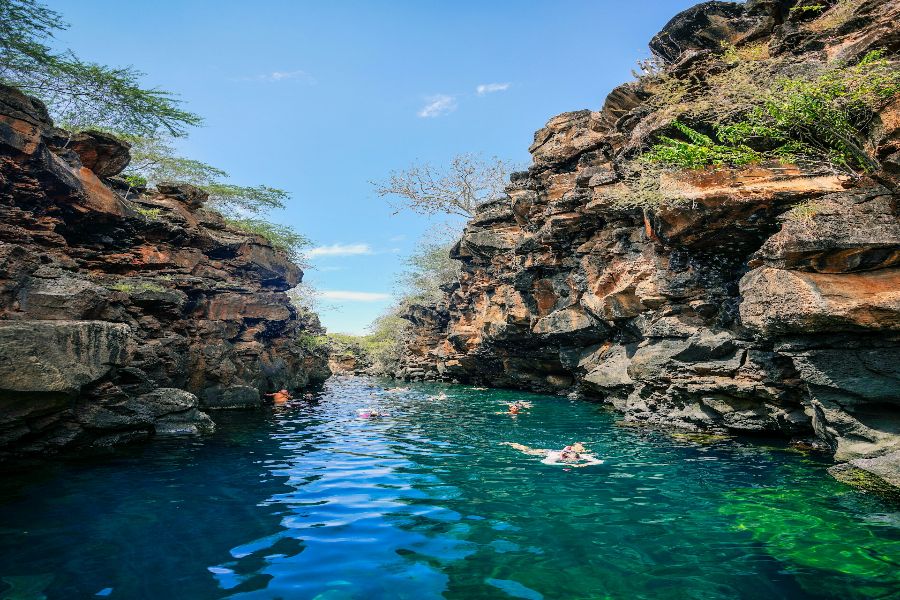
Honestly, planning a Galapagos Islands trip on a budget takes more effort than most destinations. You’ll need to think hard about your itinerary, decide where to spend and where to pinch pennies, and pick islands that match your budget and what you actually want to see.
How to Create a Galapagos Itinerary
The first time I mapped out a Galapagos trip, I felt totally overwhelmed. Flights, ferries, tours—there’s a lot to juggle. Breaking it down day by day made it manageable.
I recommend a simple route: Guayaquil → Baltra or San Cristóbal → main islands, then back. Before booking, jot down a quick table or list:
| Day | Island | Main Activity | Estimated Cost |
|---|---|---|---|
| 1 | Santa Cruz | Charles Darwin Center | $-$ |
| 2 | Isabela | Snorkel at Concha | $ |
| 3 | San Cristóbal | Beach + DIY hike | $ |
Skip expensive tours when you can DIY it. Public ferries connect the main islands for about $30–$35 per ride, and you might even find a weekday discount. If you’re not glued to a strict schedule, last-minute deals on day tours can save you a bundle.
Key Budget Travel Considerations
Let’s be honest—the “Galapagos on a budget” thing only works if you’re strategic. Your biggest expenses are usually flights and the $100 National Park fee. There’s also a $20 transit card—don’t forget to factor that in.
Hostels and guesthouses are a gamechanger for budget travelers. You’ll pay way less than at hotels, and breakfast is often included. Eating at “comedores” (local cafeterias) really stretches your money.
Skip the high season (June to August, December to January) if you want to avoid surging prices on flights and tours. I’ve seen prices drop just by shifting my trip a few weeks into the shoulder season—plus, the beaches are quieter.
Choosing Your Islands
Trying to visit every island is a rookie mistake. There are 13 major islands, but honestly, you don’t need to see them all to get the full Galapagos experience.
Stick to the “big three”: Santa Cruz, Isabela, and San Cristóbal. Public ferries connect them, and you’ll see most wildlife highlights without extra flights or pricey private tours.
Each island has its own personality. Santa Cruz is lively and full of food options. Isabela is super chill, with the best beaches and snorkeling. San Cristóbal—my personal favorite—has sea lions everywhere and great hiking. Skip the “cruise-only” islands if you’re watching your budget. Build your trip around these main hubs, and you won’t feel like you’re missing out.
Flights and Entry Costs

Getting to the Galapagos isn’t as straightforward as you might hope. Most travelers get surprised by the mix of flight options, airport choices, and those unavoidable national park fees. It adds up—so a little smart booking goes a long way.
Finding the Cheapest Flights to Galapagos
Flights only leave for the Galapagos from mainland Ecuador—usually Quito or Guayaquil. If you book early, you might score return fares as low as $300, but $450-$550 is more typical. Prices swing with the seasons and whether you catch a deal.
I use Skyscanner to compare rates across different days and whole months. It helps spot price drops and avoid those wallet-busting holiday and July-August rushes.
If you’re planning to arrive at one island and leave from another (say, land at Baltra and depart from San Cristobal), don’t forget to use the “multi-city” search. Not everyone does, but you might get a better deal and see more.
Check local Ecuadorian airlines directly, too. I’ve found last-minute flash sales by poking around their websites. Incognito mode sometimes helps, but who knows—maybe it’s just superstition.
Baltra vs San Cristobal Airports

The Galapagos has two main airports: Baltra (near Santa Cruz Island) and San Cristobal. Where you land really shapes your trip.
Baltra Airport is the busiest. From here, you’ll take a quick bus and ferry to Puerto Ayora. It’s a lively hub for cruises, tours, and town life. Sometimes flights here are cheaper, but not always.
San Cristobal Airport drops you right in Puerto Baquerizo Moreno. It’s quieter and more laid-back. If you want to get straight to the mellow side of the islands, consider starting or ending here.
Sometimes it’s actually cheaper to fly into Baltra and out of San Cristobal, or vice versa. Always search both options on fly cheap sites to see what works for your budget.
Understanding National Park Fees
Every visitor pays a national park fee—there’s no way around it. For foreign adults, it’s $100 per person, cash only. Kids under 12 pay half. The Ecuadorian government uses this for conservation.
You’ll also pay a $20 Transit Control Card before you board your flight from Ecuador. This helps officials keep track of tourists and manage the islands’ delicate ecosystem.
Bring US dollars in cash—credit cards won’t help at the airport. I’ve seen people scrambling for an ATM at the last minute, and it’s not fun.
It stings to pay that fee upfront, but you’re helping protect the Galapagos for everyone who comes after you.
Affordable Accommodation Options

Finding a place to stay in the Galapagos doesn’t have to wreck your budget. With a little research (and maybe some flexibility), you can get a comfy bed in a good spot without paying a fortune.
Where to Stay on a Budget
If you’re bargain-hunting like me, the islands have plenty of dorm-style hostels, family hospedajes, and simple guesthouses. Expect to pay $18–$30 a night for a dorm bunk or basic private room—pretty manageable for most travelers.
Book through sites that let you compare a bunch of options. I’ve scored last-minute guesthouses with free breakfast, so don’t be afraid to keep your plans loose. If you’re with a friend, splitting a cheap private room is often smarter than bunk beds.
One week, I couch-hopped across Isabela and found the hostel vibe super friendly—no-frills, but lots of character. Booking ahead can save you money, especially in high season. For cheap lodging, compare budget hotels, apartments, and more in one place.
Best Towns for Saving Money
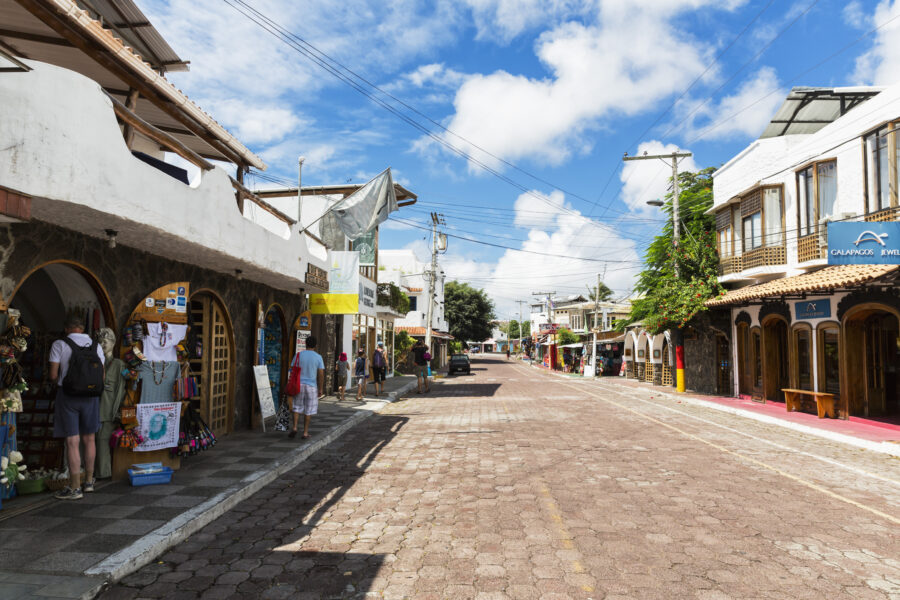
Puerto Ayora on Santa Cruz is the main tourist hub and your best bet for stretching your travel cash. Grocery stores, food stalls, and loads of hostels are all within walking distance of the harbor. It’s a great base for day trips.
Puerto Baquerizo Moreno on San Cristobal is next. The town’s small, so you can walk everywhere, and most budget hostels are close to the port. You’ll meet other travelers swapping tips on cheap boat tickets or lunch deals.
Isabela Island is quieter, but you’ll find beachfront guesthouses at the lowest prices. The hostel crowd here is especially welcoming if you’re traveling solo.
I still remember those early mornings in the harbor towns—laid-back, a little sleepy, and honestly, kind of magical. Bring cash, especially for Isabela—ATMs are unreliable, and some hospedajes only take cash.
Island Hopping vs. Galapagos Cruise
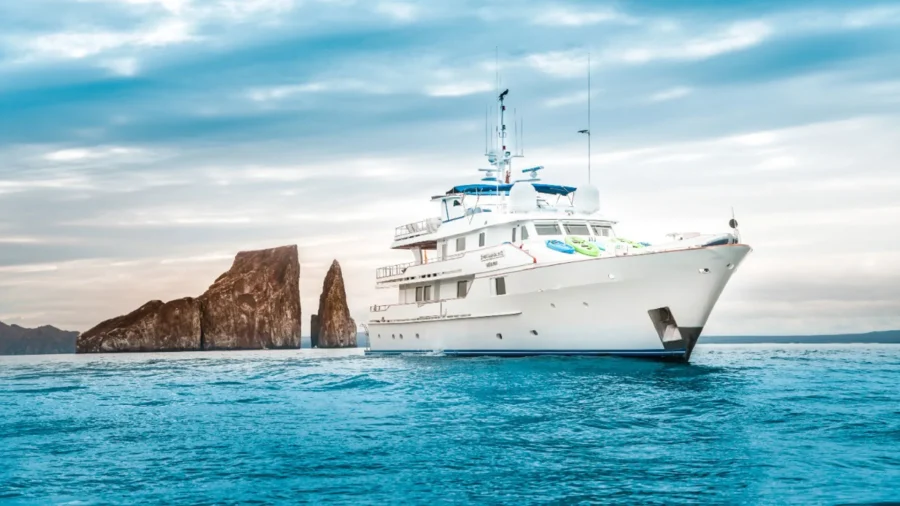
When you’re trying to see the Galapagos on a budget, you really have two main choices: join a Galapagos cruise or do your own island hopping. The experiences are totally different, and it’s not just about the price—how you travel and what you see will change, too.
Pros and Cons of Cruises
A Galapagos cruise gets you to places you can’t reach on your own—those wild, uninhabited islands you’ve seen in nature documentaries. Your boat becomes your hotel, so you skip the daily check-ins and ferry chaos. Meals and guides are sorted, so you can just focus on the views.
But let’s be real: cruises are pricey, even the “budget” ones. Unless you stumble onto a last-minute deal (and yes, it does happen if you’re flexible), costs add up fast. Cabins can feel tiny compared to island hotels, and you’ll spend a lot of time at sea.
If you like making spontaneous plans or just want more time wandering (or napping) on land, cruise itineraries might feel a bit strict. I once met a guy who missed his sunrise hike because he overslept—on land, you can set your own pace.
Budget-Friendly Island Hopping
Island hopping gives you loads of flexibility. Stay on the main islands—Santa Cruz, San Cristóbal, and Isabela—and catch water taxis or public ferries between them. Pick cheaper hostels, eat at local spots, and actually mingle with the community. You can book tours to top sites like Los Tuneles or Bartolome as you go.
You’ll spend less, especially if you hunt for local deals or team up with other travelers for tours. You also get to decide how long you want to stay on each island—if you fall in love with one, just linger. I’ve had pizza nights in Puerto Ayora that cost less than a coffee on a cruise ship.
You’ll miss out on some of the far-flung, isolated islands that only cruises reach. You’ll also need to organize your own day trips and keep track of ferry schedules, which can be a hassle if you hate planning. Still, if you want to experience the Galapagos without draining your bank account and you like hanging with locals, this is the way to go.
Saving on Food and Local Transportation
You might be surprised at how easy it is to dodge those tourist prices in the Galapagos—locals have some clever tricks if you know where to look. Saving on meals and rides means you’ll have more left over for the truly unforgettable stuff.
Eating at Local Restaurants and Markets
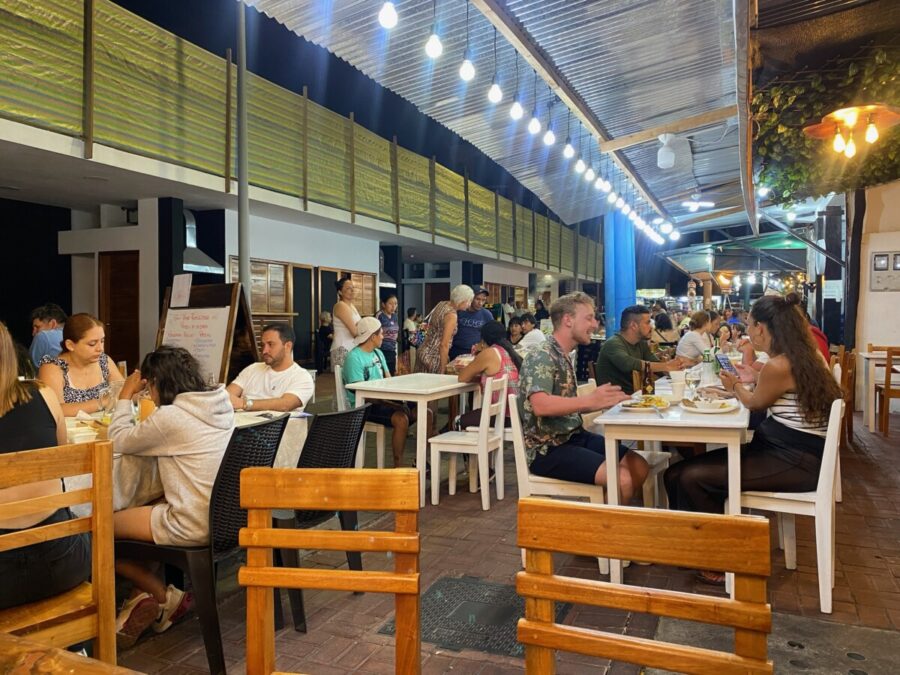
Honestly, skip the fancy waterfront joints—they’re mostly for visitors and tend to charge way too much. The good stuff? It’s tucked away in the neighborhoods where people actually live and work.
Check out restaurants offering a “menu del dia” (menu of the day). You’ll usually get a solid meal—soup, a main, and juice—for a fraction of what you’d pay at the touristy spots.
Markets are where I always end up, and I’d argue they’re the most authentic food experience you’ll get here. Grab fresh fruit, maybe a banana or two, and eat outside among locals. Food stalls in the market dish out plates of fish, rice, or empanadas for just a few dollars.
Sometimes the chairs creak and the condiments are running low, but that’s all part of the fun, right? You’ll get more flavor (and usually bigger portions) for less money.
Bring your own water bottle—bottled drinks get expensive fast. If you’re a coffee fan, Ecuadorian coffee is a treat. Look for a small café tucked away from the main strip. Locals always know where to find the best cup, so don’t be shy about asking.
Getting Around the Islands on a Budget
Life on the islands has its own pace, and you’ll save the most if you embrace it. Forget taxis or organized tours—water taxis are the way to go between ports and beaches.
A ride usually costs just a few bucks, and you might even share your boat with a sea lion or two. It’s not exactly a luxury yacht, but honestly, it’s more fun this way.
Traveling between islands? Inter-island ferries are the cheapest and, in my opinion, the most scenic option. Unless it’s a holiday, you can just show up at the dock and buy your ticket.
Most islands have walking trails or bikes to rent, so you don’t need a car. If you’re lugging a lot of gear, local pickup trucks act as shared taxis—easy to flag down and usually very straightforward.
Always keep small bills and coins handy; drivers and boatmen rarely have change. Schedules can be a bit of a mystery—everything runs on “island time.” You’ll get used to it (eventually).
Top Budget Activities and Day Tours
Honestly, traveling the Galapagos on a budget doesn’t mean you have to settle. There’s a surprising amount to do if you know where to look—and how to book.
Snorkeling and Diving for Less
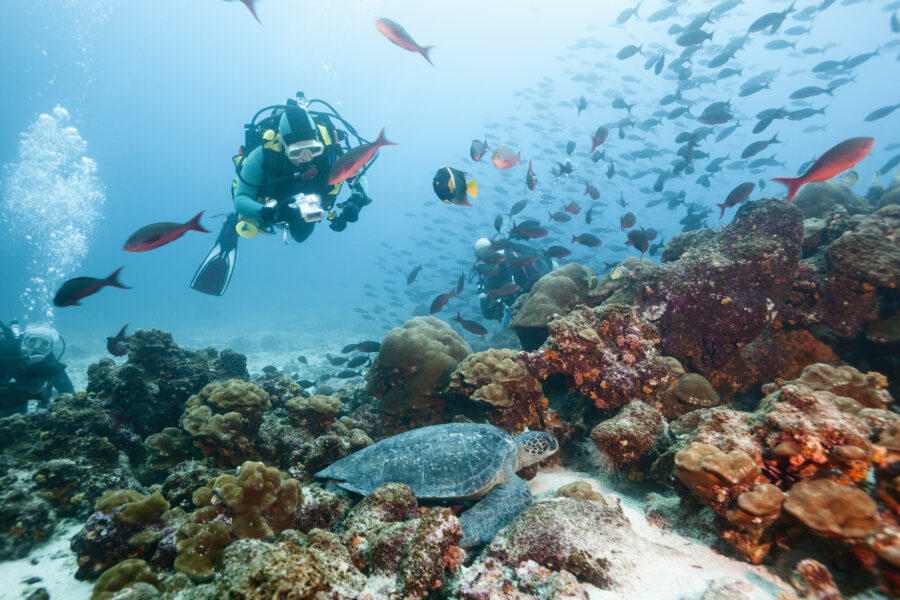
Snorkeling here is probably the best value thrill you’ll get. You can rent a mask and fins for just a few bucks a day from kiosks on the main islands.
Sometimes if you chat up the vendor, they’ll tip you off to a secret spot or knock a little off the price. Don’t be afraid to ask.
Popular, low-cost beaches for snorkeling:
- Playa Mann on San Cristobal
- Concha de Perla on Isabela
- Las Grietas on Santa Cruz
I’ve snorkeled with sea turtles and playful sea lions at Concha de Perla—no guide, no extra cost. Want to level up? Some half-day guided snorkeling tours are surprisingly affordable if you check platforms like GetYourGuide.
Scuba diving costs more, but it’s still less than what you’d pay in other famous dive spots. Dive shops sometimes offer group rates or last-minute deals if you walk in and ask. Bargaining isn’t rude here—it’s expected, especially off-peak.
Affordable Full-Day and Half-Day Tours
You really don’t need to shell out for a cruise. Island-based tours—full or half-day—are much cheaper and let you pick your own pace.
A day trip might have you zipping between islands by speedboat, visiting uninhabited beaches, or spotting giant tortoises in the wild. Most tours include a guide and gear, and sometimes even lunch. Double-check what’s included before you pay, though.
Tour desks and agencies are everywhere in Santa Cruz and San Cristobal. Walk in, compare prices, and see if they’ll give you a group discount or a deal for booking last minute. Booking platforms like Viator are handy for browsing options, especially if you want a bit more structure.
Half-day tours are my personal favorite—they’re easier on the budget and leave you free for afternoon adventures.
Free and Low-Cost Wildlife Experiences
Some of the best Galapagos experiences don’t cost a thing. Every island has a free coastal walk, boardwalk, or interpretive trail where you’ll practically trip over marine iguanas or spot blue-footed boobies just hanging out.
The Charles Darwin Research Station on Santa Cruz and the Interpretation Center on San Cristobal both offer free entry. Early mornings and late afternoons are prime times for wildlife—animals seem to pose for your camera.
Keep your eyes peeled for:
- Sea lions napping on the docks
- Sally Lightfoot crabs scuttling over black lava rocks
- Pelicans gliding over calm water
Bring a hat, refill your water bottle at public wells, and keep your camera close. Wildlife is so common, you might forget to be amazed—don’t let that happen.
Best Islands for Budget Travelers
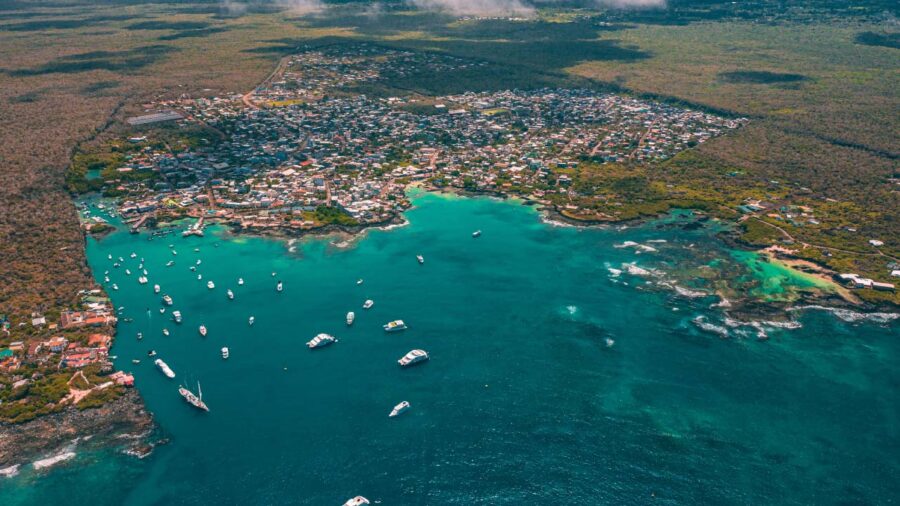
If you stick to the four main inhabited islands—Santa Cruz, Isabela, San Cristobal, and Floreana—you’ll save cash and still see all the classic wildlife and local culture. Each island has its own perks for budget travelers, whether you’re after free snorkeling, cheap day trips, or just a relaxed place to crash.
Santa Cruz Highlights
Santa Cruz is usually the first stop for most travelers, and honestly, it’s a budget-friendly place to start. Puerto Ayora, the main hub, is packed with hostels, guesthouses, and street food stalls.
I always recommend wandering through the fish market at lunchtime—fresh ceviche for a few bucks is tough to beat. There’s something special about watching pelicans and sea lions hang around the fishermen, hoping for scraps.
You don’t need to pay for pricey tours to enjoy the island. Take a walk to Tortuga Bay; it’s one of the most stunning beaches I’ve seen, and it’s totally free if you don’t mind a bit of a trek.
Wildlife is everywhere, and the Charles Darwin Research Station won’t charge you unless you want to leave a donation. Santa Cruz is also a great base for day trips to other islands—no need to splurge on a cruise.
If you’re flexible, you can sometimes haggle for last-minute deals at local agencies. It never hurts to ask.
Exploring Isabela on a Shoestring
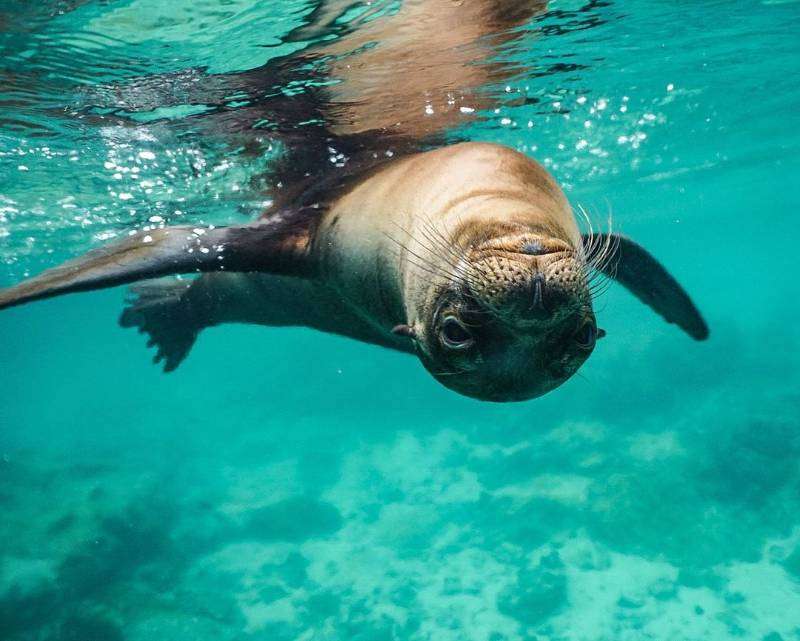
Isabela Island is my top pick if you want to stretch your money and really get into nature. It’s the biggest island, but somehow feels the most laid-back.
Most hotels and hostels are simple but cheaper than Santa Cruz. Wildlife is everywhere, and you don’t have to pay to see it.
Snorkel with sea lions at Concha de Perla, watch flamingos along the boardwalk, or bike out to the Wall of Tears for a bit of history. Most of these cost little or nothing—just a bike rental at most.
For food, stick to local bakeries or snack shops for cheap empanadas and fresh fruit. I once scored a free coffee just by chatting with a bakery owner in Puerto Villamil. People are friendly—don’t be afraid to strike up a conversation.
San Cristobal on a Budget
San Cristobal is perfect if you want a little adventure without the crowds. Accommodation varies, but if you book ahead or walk in during low season, you’ll find a deal.
I stayed at a tiny family-run hostel where they helped me plan free hikes around the island. La Loberia is a beach just outside town—throw down your towel and watch the sea lions, no entry fee required.
The Interpretation Center gives you a crash course in the island’s wildlife and history, also for free. At night, check out the local kiosks near the waterfront for cheap dinners and cold drinks.
It’s easy to meet locals—sometimes a fisherman will share a story or point you to a hidden snorkeling spot. Some of my best tips have come from these spontaneous chats.
Floreana for the Adventurous
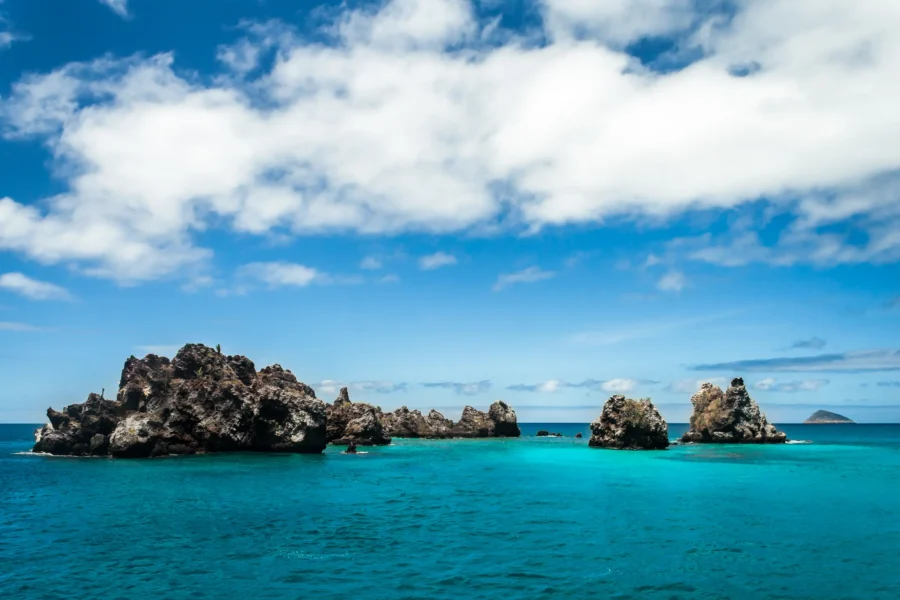
Floreana doesn’t get many visitors, which is perfect if you’re after a rustic, quiet vibe. Accommodation is basic and limited, so book ahead if you can.
Camping is possible here—one of the few islands where you won’t get odd looks for rolling out your sleeping bag (but definitely check where it’s allowed first). You can catch a public ferry from Santa Cruz, which is the cheapest way over.
Once you’re there, rent a bike and explore the island’s dirt roads and hidden coves. I met a couple who stumbled on a private beach just by pedaling in the right direction.
Post Office Bay is free to visit and has this quirky tradition—leave a postcard, pick one up, and deliver it somewhere in the world as you travel. Giant tortoises roam near the highlands, and you can see most sights solo or by joining a cheap local group.
If you’re cool with unpredictability and don’t need fancy comforts, Floreana rewards you with authenticity and some of the best stargazing I’ve ever seen.
Must-See Sights and Local Experiences
The Galapagos isn’t just about jaw-dropping wildlife and dramatic scenery—though, let’s be honest, you’ll get plenty of both. There are quirky research centers, wild beaches, and creatures you literally can’t spot anywhere else.
Charles Darwin Research Station
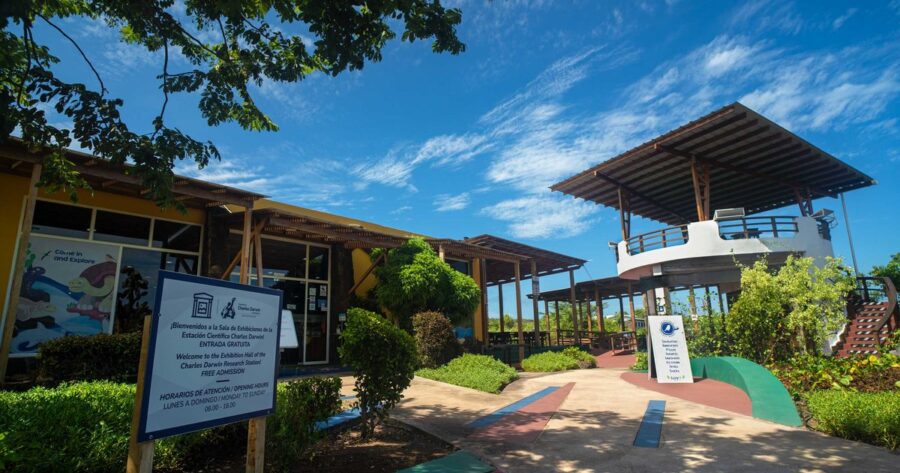
If you’re even a little curious about conservation, the Charles Darwin Research Station in Puerto Ayora is a must. I’m not a scientist, but even I found it fascinating to see the behind-the-scenes work that keeps Galapagos wildlife thriving.
You can get up close to giant tortoises—babies and elders alike—as they wander or munch on greens. Info boards in English and Spanish are scattered around, but honestly, I enjoyed just wandering at my own pace.
Sometimes a staff member will chat if you look interested enough, and if you time it right, you might see scientists cleaning a tortoise pool or checking nests. Entry’s free, but donations help keep things running. And please—don’t touch the animals, no matter how tempting.
Tortuga Bay and Beaches
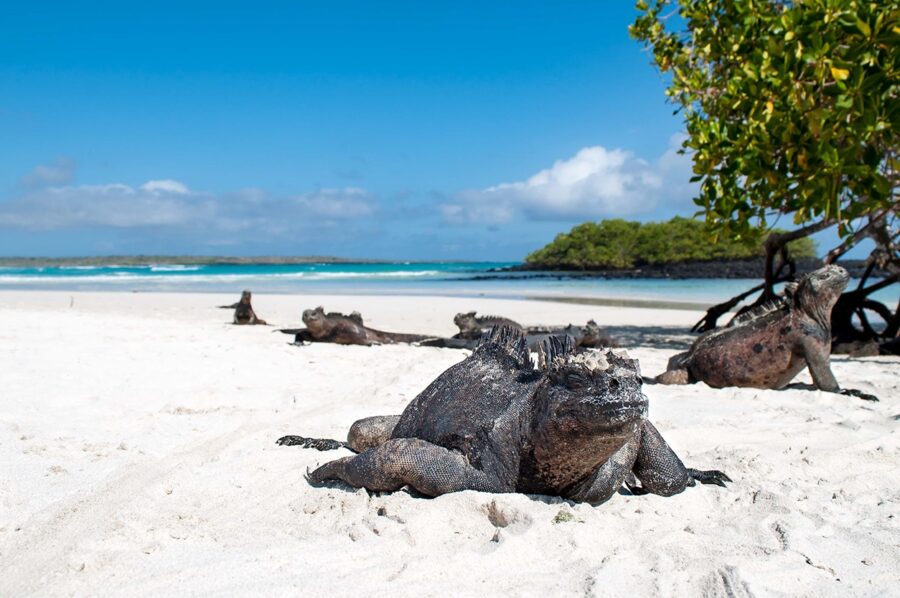
Tortuga Bay is, hands down, one of the most beautiful places I’ve been. The walk takes about 45 minutes from town, but it’s worth every sweaty step.
You’ll spot mangroves, little lizards, and birds along the trail. When you reach the blinding white sand and turquoise water, you’ll see why everyone raves about it.
Marine iguanas lounge on the rocks, totally unfazed by humans. At the far end, the water is calm enough for swimming or just floating around.
If you’ve got a rented kayak or snorkel gear, bring it along—you never know what you’ll spot. Rays and harmless little reef sharks sometimes cruise by.
Best part? It’s free. Just bring water, snacks, and loads of sunscreen—there’s barely any shade, and I’ve seen way too many sunburned tourists limping back to town.
Giant Tortoises and Endemic Species
Spotting giant tortoises in the wild? That’s something you just can’t forget. And honestly, you don’t need a fat wallet to do it. Local ranches like El Chato on Santa Cruz let you wander right where these living boulders plod around. If you hit a muddy patch, just borrow a pair of boots—they’ll usually hand them over for free.
Keep your eyes peeled for other Galapagos oddballs, too. You’ll bump into fearless little finches, brilliant yellow warblers, and lava lizards sunning themselves on black stones. Each island feels like it’s from a different planet, really. Española has those wild, colorful marine iguanas, while Isabela? That’s where you’ll catch penguins darting around.
If you’re a wildlife nut, head for the Tortoise Center on Isabela. It’s usually quieter and you can get up close to see how these giants grow up—plus, the displays are actually interesting, not just dry facts. You might walk out realizing just how rare and delicate these creatures are.
Unique Landmarks and Trails
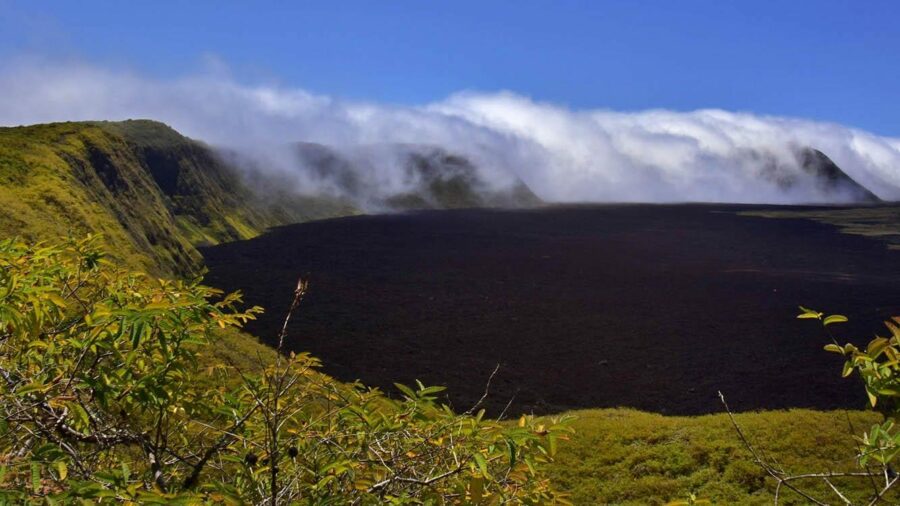
Want to get a real feel for the Galapagos? Skip the cookie-cutter boat tours and try some trails instead. Sierra Negra Volcano on Isabela Island totally blew my mind. The hike isn’t bad, but when you reach that massive crater—one of the world’s largest—you’ll probably just stand there, grinning. Oh, and please, don’t wear flip-flops. Lava rocks here mean business.
Kicker Rock (León Dormido) sits just off San Cristóbal and it’s legendary for snorkeling. Sharks, turtles, rays—they all show up. If you’re on a budget, try teaming up with other travelers to split the boat costs.
Don’t pass up Punta Pitt. You’ll see those red and blue-footed boobies, and it’s one of the only spots where all three booby species hang out. The boat ride’s fun, the hike is breezy but can get windy, and the bird-watching is just wild.
If you crave quiet, get up at dawn or head out late in the afternoon. You’ll dodge the crowds, catch the cooler air, and the animals are way more active. Bring your camera—you never know when a sea lion or a nosy hawk will pop up right in front of you.
Conservation and Responsible Travel Tips
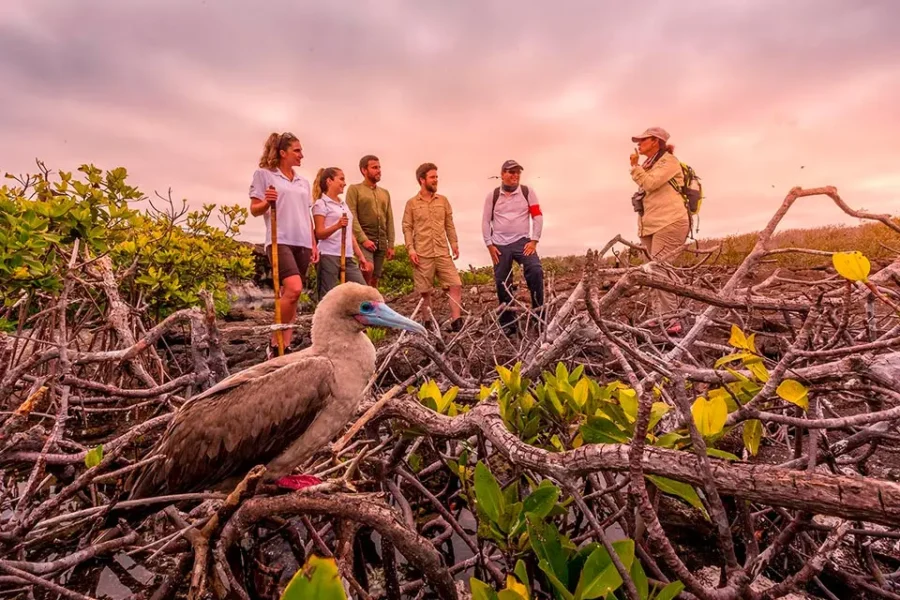
You can travel the Galapagos on a budget and still pitch in for the unique environment. Even if you’re pinching pennies, little choices matter for the islands and the rare critters living there.
Supporting Conservation Efforts
When you enter Galapagos National Park, you’ll pay that infamous $100 fee. It stings, sure, but the money really does go straight into the park—protecting animals, funding research, and keeping things running. That fee? It’s not just a cash grab.
Want to do more? Easy—grab souvenirs from local shops or eat at family-run joints instead of the usual chains. Your money helps locals join conservation projects (and honestly, the food’s just better).
Groups like the Charles Darwin Foundation and Galapagos Conservancy do a lot here. A small donation or a souvenir from their shops keeps their work possible. It’s not about grand gestures—just being thoughtful helps.
Respecting Local Wildlife
Animals in the Galapagos act like you’re not even there. I once had a blue-footed booby stare me down from two feet away, like we were old pals. But remember—it’s their turf, not yours.
Here’s what I always do:
- Stay at least two meters (six feet) from animals.
- Don’t feed them. Not even a crumb.
- Move slow and keep quiet. Sudden moves freak everyone out, even iguanas.
- No camera flash. Bright lights bug the birds and sea lions.
- Let animals cross first. If a sea lion blocks your path, just wait it out.
Snap photos, sure, but give them their space. The less you bother them, the more natural your shots look anyway.
Understanding Environmental Rules
You’ll see park rules posted everywhere in the Galapagos, and they mean business. The islands are fragile—one careless move can do real damage. The park even landed on UNESCO’s “red list” for endangered sites in the past, mostly because too many visitors ignored the rules.
So, here’s what I stick to:
- Stay on marked trails. Wandering off can crush rare plants.
- Don’t bring seeds, fruits, or anything that might hide bugs. Customs will check, and there’s a good reason for it.
- Leave rocks, shells, and sand where they are. They’re all part of the ecosystem.
- Pack out every bit of trash. Bins are easy to find—no excuses.
Some of these rules sound strict, but honestly, they keep this place wild. If you look out for nature here, kids in the future will get to see it too. Isn’t that worth it?
Smart Money-Saving and Safety Tips

Traveling to the Galapagos on a budget? Totally doable, but you’ll need to plan ahead and watch for sneaky costs. A bit of caution goes a long way toward a smooth trip.
Booking and Seasonal Timing Strategies
Want a budget trip? Timing is everything. Prices skyrocket in December–January and June–August. If you can, travel in May or September. You’ll get better deals, fewer crowds, and your wallet will thank you.
Last-minute cruise deals can save you big—sometimes 40% or more. I once scored a half-price 5-day cruise by waiting until the day before in Puerto Ayora, but you need to be flexible. If you’re a planner, book mainland flights first, then buy Galapagos ferries and activities yourself. It almost always beats package tours.
Check prices on several sites before paying for anything. On the islands, cash usually gets you a discount—sometimes a free snorkel rental, even.
Travel Medical Insurance Essentials
Don’t skip travel medical insurance, even if you’re on a shoestring. Healthcare on the islands is basic, and an emergency flight to mainland Ecuador costs a fortune. Even a stubbed toe or a nasty jellyfish sting can ruin your trip and cost you.
I always double-check if my regular insurance covers me abroad (usually, it doesn’t). Short-term travel medical insurance for the Galapagos is cheap and usually covers accidents, sudden illness, and evacuation. Make sure it includes snorkeling or hiking.
Keep both digital and paper copies of your policy and emergency numbers—wifi isn’t always a sure thing. I learned that the hard way after my friend twisted an ankle hiking; we spent hours tracking down paperwork.
Avoiding Hidden Costs
Hidden costs pop up fast in the Galapagos if you’re not watching. The big ones: the $100 national park fee, the $20 INGALA transit card, and those little taxi boats between ferries and shore (under $2, but they add up).
Some day tours don’t include gear rental, so you might pay extra for wetsuits or snorkels. Always ask what’s included when booking. Eating street food or shopping at local markets saves a bundle over restaurants. I usually bring a reusable water bottle—most hostels offer free refills.
ATM fees on the islands are wild, so bring enough cash from the mainland, but not so much you’re stressed about theft. If you’re splitting costs with friends, money apps like Splitwise save headaches—trust me, it keeps things friendly at the end of your trip.
Frequently Asked Questions
Traveling the Galapagos on a budget? It takes some savvy planning, but it’s totally possible if you know a few insider tricks. Where you book, when you go, and which islands you hit can make all the difference.
What are the best budget-friendly Galapagos trip packages available?
The price tags on some Galapagos cruises are jaw-dropping, I know. But if you stick to land-based tours, you’ll save a ton. “Island hopping” packages let you stay on Santa Cruz or San Cristobal, use local ferries, and book day tours as you go.
Local agencies in Ecuador—especially in Quito or Guayaquil—sometimes have deals you won’t see online. And last-minute websites are worth checking; sometimes you’ll find a bargain at the last second.
How can travelers find affordable Galapagos cruises without sacrificing quality?
Flexibility is your best friend here. Last-minute cruise deals are everywhere in the Galapagos because boats want to fill up. If you can wait until just before your trip, you can score huge discounts. Some of my best finds came just a week before departure.
Go for smaller boats if you can. They’re usually cheaper, friendlier, and you might end up swapping stories with your shipmates. Boats like Golondrina or Aida Maria pop up a lot in budget forums—worth a look.
From Ecuador, what is the most cost-effective way to organize a trip to the Galapagos Islands?
Book your own flight from Quito or Guayaquil—pick whichever is cheaper when you check. Guayaquil flights are often a bit less, maybe $30–50.
Skip the big travel sites for ferries or day tours. You can buy those in person on the islands for way less. Book a couple nights on Santa Cruz or San Cristobal, then sort out tours once you arrive—it’s not nearly as risky as it sounds.
For tourists traveling from the UK, what are the tips to minimize the cost of a Galapagos visit?
Flying from the UK gets pricey, but a few tricks help. Book your flight to Ecuador early—London to Quito or Guayaquil sometimes goes on sale, but it’s rare. I always check both and let price decide.
Avoid UK summer holidays and Christmas; flights and hotels jump in price. Bring snacks and basics with you—food on the islands isn’t cheap.
Which is the less expensive airport to fly into for a Galapagos visit, Quito or Guayaquil?
Usually, Guayaquil is the cheaper option—most direct Galapagos flights leave from there, and it’s closer, so less backtracking. I always double-check, though, because Quito sometimes surprises me with a better deal. Guayaquil’s airport is also less chaotic and has quicker connections.
Regarding travel costs, how can one estimate the average amount of money necessary for a trip to the Galapagos?
If you really strip things down—fly in from Ecuador, crash in simple hostels, and wander around on your own—a solid week might only set you back about $1,000 USD. That figure covers flights, the pretty hefty national park entry fee (they’ll hit you for $100 per person), some basic island hopping, and a couple of day tours.
But honestly, those costs climb fast once you start eyeing cruises or nicer hotels. I always tell people: budget more than you think you’ll need. Meals on the islands can surprise you, especially if you want to enjoy the seafood scene.
Give yourself some breathing room in your budget. You never know when you’ll want to splurge on a last-minute tour or find that one local spot everyone’s talking about.



